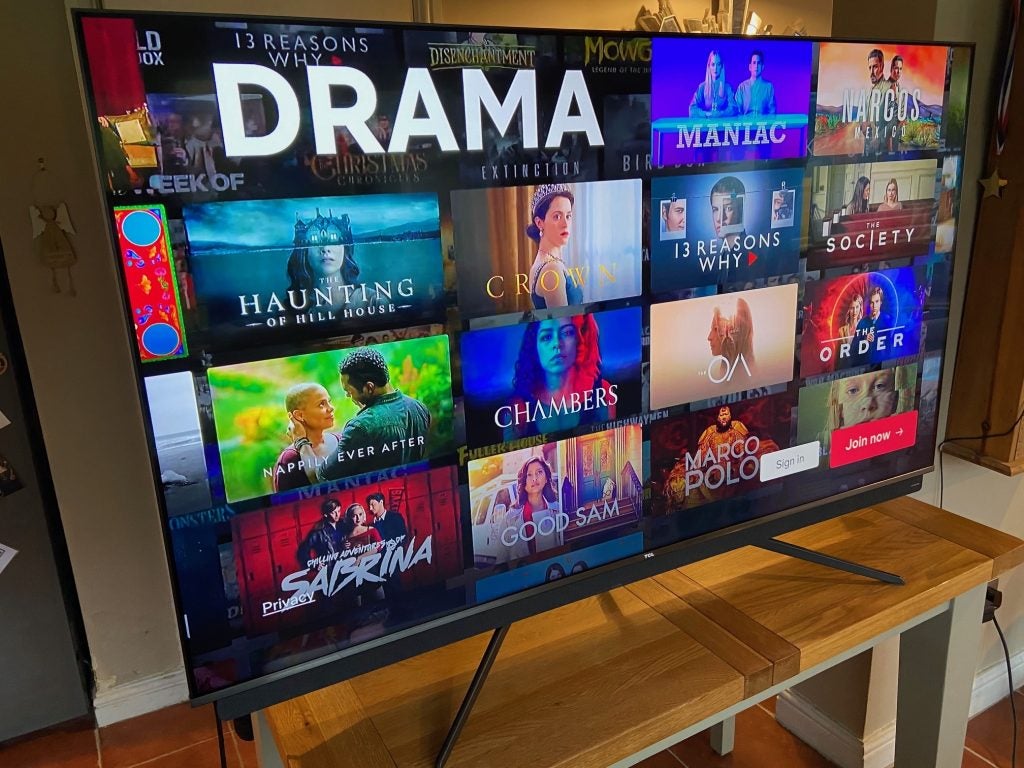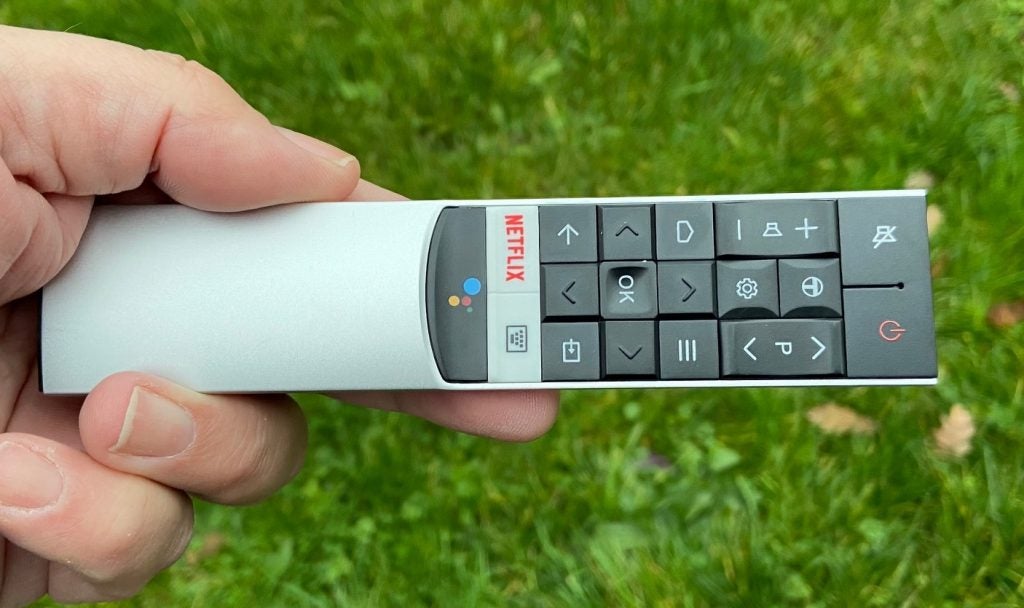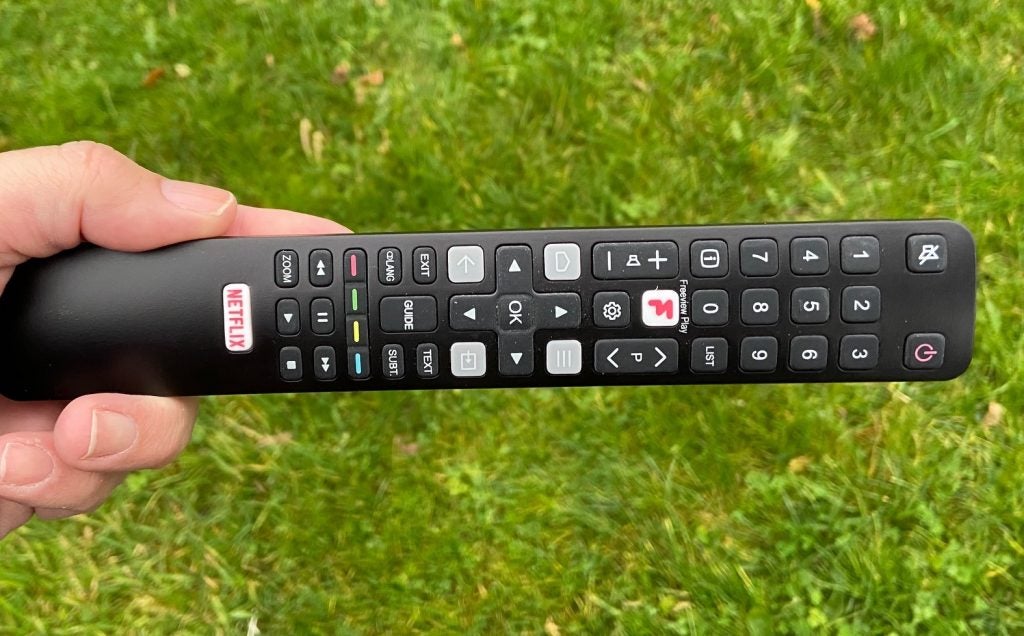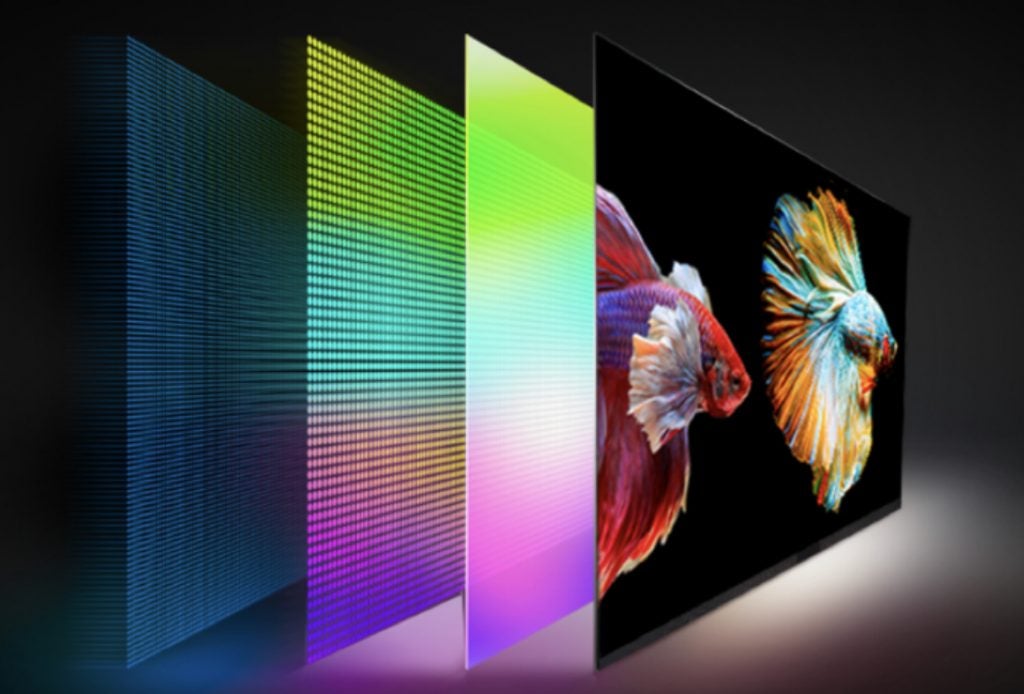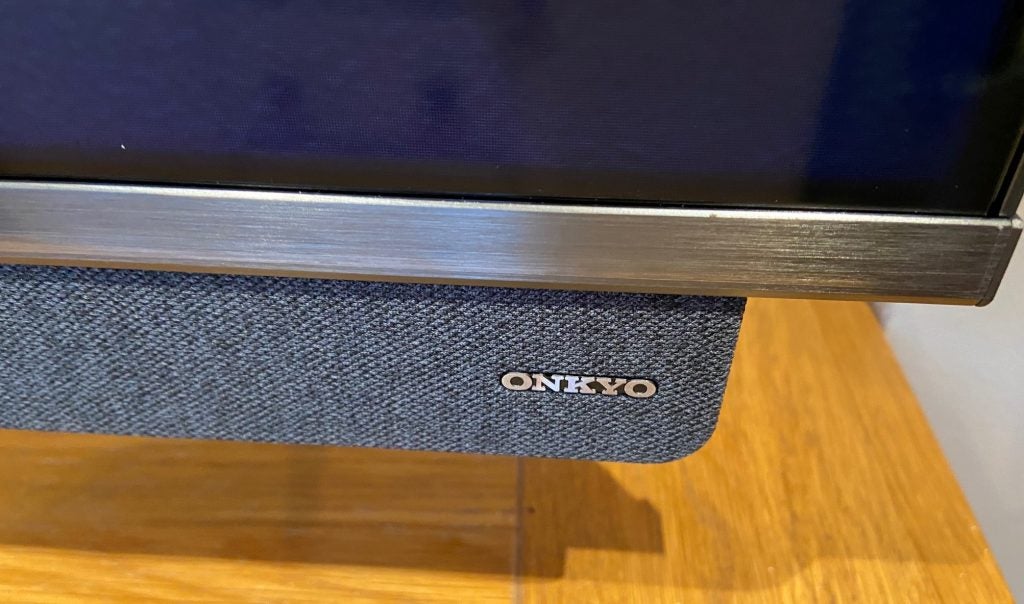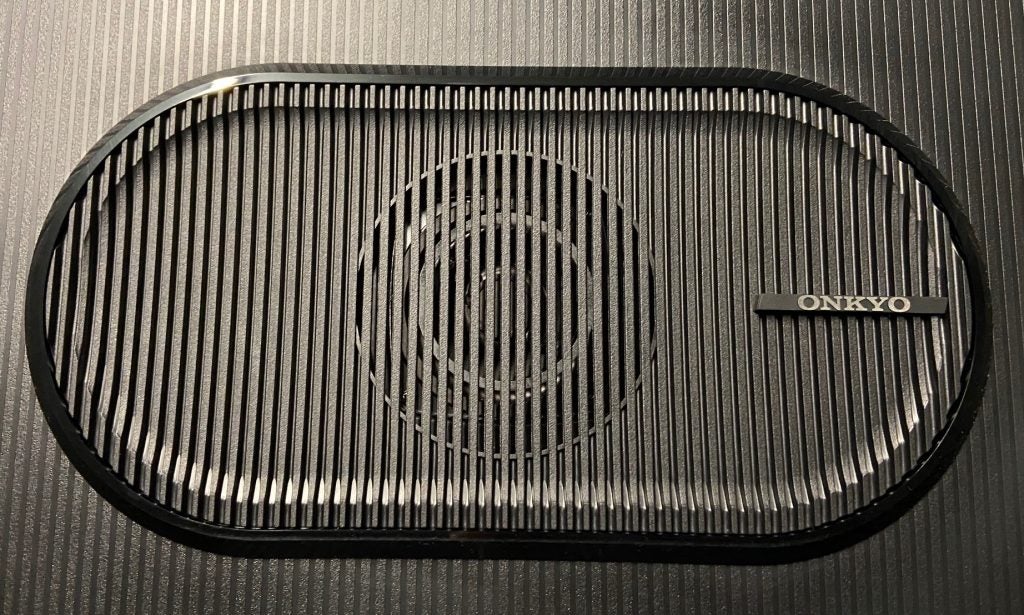TCL 65C815K Review
TCL 65C815K Review
TCL shows just how extreme even affordable QLED technology can get - with hit and miss results
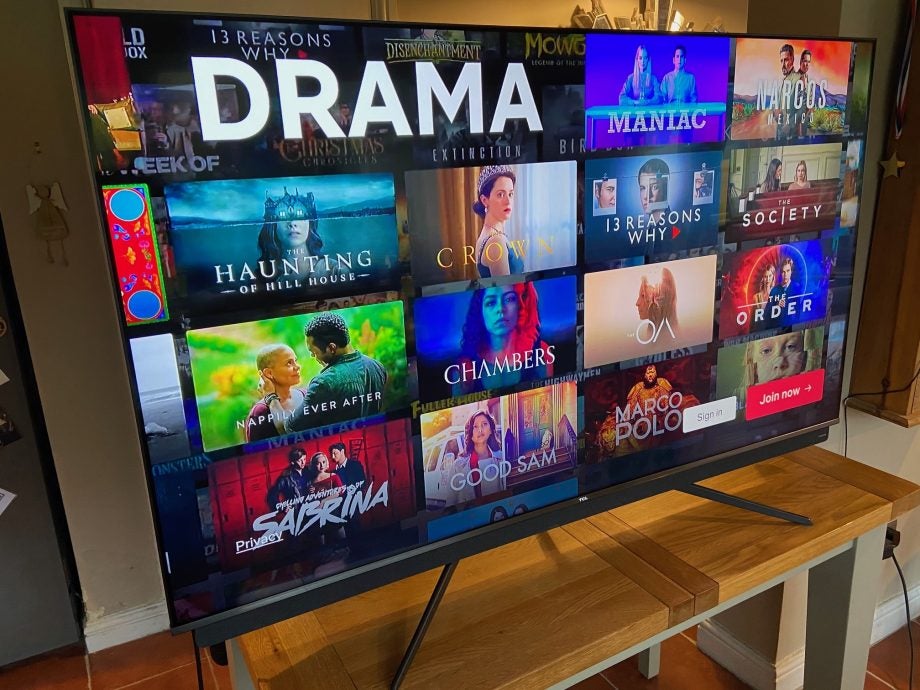
Verdict
While it’s a shame that TCL doesn’t yet grace Europe with the same impressive models it releases in the US, the 65C815K is a solid effort for its money – especially if you tone down its more extreme instincts
Pros
- Potent sound system
- Fair value for what’s on offer
- Impressively bright and colourful pictures for the price
Cons
- Colours can go nuts with out-of-the-box settings
- Dark scenes reveal uneven backlighting
- Loss of contrast with off-axis viewing
Key Specifications
- Review Price: £899
- Built-in Onkyo ‘soundbar’
- Android 9.0 smart system
- Native 4K resolution
- Three HDMIs
- QLED Quantum Dot colour technology
Thanks to a winning combination of aggressive pricing and increasingly acclaimed performance, TCL has in recent times risen from pretty much nowhere to rivalling the likes of Samsung and LG with the number of TVs it shifts each year.
This success has been driven mostly by the US and Asian markets. In Europe, the TCL brand has taken longer to find its feet – not least because we haven’t been lucky enough to get the same TCL product line that’s been such a commercial and critical hit in the States.
This remains the case with the 65C815K, which, despite being a high-end model by TCL Europe standards, doesn’t get the full array with local dimming design that’s been so important to TCL’s success elsewhere. However, this doesn’t mean the 65C815K can’t further TCL’s European cause.
TCL 65C815K price and availability
The TCL 65C815K is available in the UK and Australia from a number of retailers, most notably ao.com, and bootskitchenappliances.com in the UK, and thegoodguys.com in Australia. It costs £899 from both UK outlets, and $1,595 from the Australian retailer. It also appears on TCL’s EU website, so it’s presumably available in some EU countries, too.
This model isn’t available in the US.
TCL 65C815K design – If you’ve got it, flaunt it
- Visible soundbar
- Super-thin outer edges
- Unusual tri-foot support
There are a number of unusual elements to the 65C815K’s reasonably attractive design. First, it features a very obvious, blue-tinted soundbar hanging from its bottom edge. This wears the branding of renowned Japanese audio brand Onkyo, raising hopes this might be the rarest of things: an affordable TV with a built-in sound system that doesn’t sound horrible.
The 65C815K is also notable for how exceptionally slim its screen is at its outer edges. So much so that you’d be forgiven for thinking it must be an OLED rather than LCD TV.
The rear does suddenly become chunkier a few inches in from those super-svelte edges, but even then the set wears this extra area of bulk quite nicely. The chunkier area doesn’t just house the screen’s processors and connections; it also provides space for TCL to build in a strikingly large rear-facing bass driver – again adorned by the Onkyo logo.
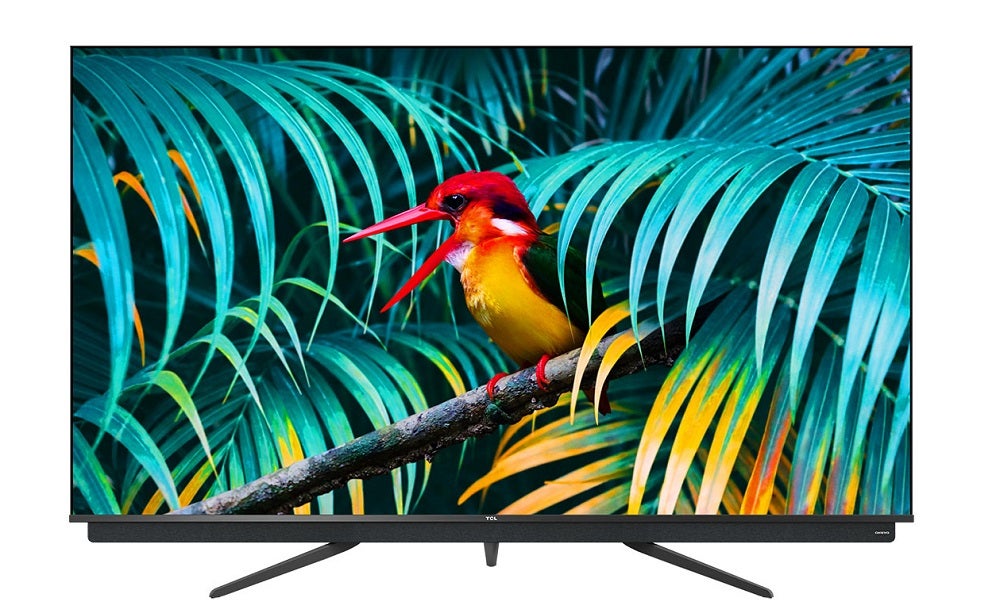
While TV designs typically seem keen to crow about keeping speakers hidden away as if they’re some sort of dirty secret, personally I have no problem with the TCL’s public display of sound-quality affection.
The third quirk of the 65C815K’s design is the way it rests on three separate feet rather than the usual two. Two of these protrude forward, the third, centrally mounted one protrudes backward. I’m not convinced the aesthetic impact of this approach justifies the effort of having to attach a third foot during set-up. At the same time, however, it certainly doesn’t look ugly. It also supports the TV’s reasonably robust build quality quite stably.
TCL 65C815K features – Quantum Dots with a side of Android
- QLED colour technology
- HDR10+ and Dolby Vision HDR support
- Built-in Onkyo-designed audio system
- Android 9.0 smart system
The headline attractions of the 65C815K are its use of QLED technology, despite only costing £899, and its built-in Onkyo-designed sound system.
The QLED terminology means it uses Quantum Dots rather than the traditional LCD filters to deliver its colours, opening up the potential for a wider spectrum of colours. This premium technology would typically only be found on 65-inch TVs that cost significantly more than £899.
The 2.1 Onkyo sound system provides 70W of power through two forward-firing drivers, and one large bass radiator on the rear. There’s built-in Dolby Atmos decoding, too.
The 65C815K uses edge LED lighting to illuminate a VA type of LCD panel. The VA panel promises better contrast than the IPS alternative, but edge lighting typically delivers less impressive backlighting than LEDs mounted directly behind the screen.
There’s no true local dimming in the edge LED lighting system, despite the set carrying a Micro Dimming feature. This feature actually refers to the way the TV’s processor breaks down images into small areas so that it can more accurately determine how best to render the finished image.
The only other really notable picture processing feature is Clear Motion, which adds black frames into the image stream to give 24p movie sources a more cinematic look.
Impressively, the 65C815K supports both of the so-called active high dynamic range (HDR) formats: HDR10+ and Dolby Vision. Most rival TVs support only one or other of these formats, or neither of them – and, as we’ll see, this dual active HDR support is especially important to the 65C815K’s performance.
Naturally, TCL’s set also supports the more common HDR10 and broadcast-friendly HLG HDR formats.
Connections include three HDMIs and two USBs, which is reasonable for an £899 65-inch TV. However, none of the HDMI ports support the latest gaming features of 4K at 120Hz, variable refresh rates or automatic low-latency mode switching.
That’s not to say the screen is a bust for gaming, of course. Not everyone has a PS5, Xbox Series X or one of the latest Nvidia or AMD high-end PC graphics cards, after all, and the screen only takes a very respectable 16.2ms to render image data when running in its Game mode. It’s currently the case, too, that only very premium TVs tend to support the latest game features, so you won’t find such support on any of the 65C815K’s similarly priced rivals.
One last connection point to note is that the 65C815K’s HDMIs only support the standard ARC system, not the higher-bandwidth eARC that would have unlocked lossless Dolby Atmos passthrough.
TCL has turned to Android TV for its smart TV features. This seems like a pretty sound move for a brand unlikely to have as many relationships – at least in Europe – with all the key content providers as Google/Android does. The 65C815K’s Android implementation is sound, too. It runs slickly, supports Google Chromecast and Google Assistant voice recognition (complete with a far-field mic), and the support for both HDR10+ and Dolby Vision means you always get the optimum picture quality any streaming source offers. The one big app absentee is Apple TV.
TCL 65C815 picture quality – The good, the bad and the ugly
- Extremely bold colours – to a fault with some of the out-of-the-box settings
- Some backlight clouding issues
- Good 4K clarity with static images, but some motion blur
The 65C815K’s pictures are… complicated. A unique mix of unexpected strengths and more predictable weaknesses.
The most glaring example of this mixed-bag performance comes from its colours. With some sources and settings its QLED-driven colours are strikingly good, achieving saturations and volumes seldom if ever seen at the 65C815K’s price point. But at other times its colours go what’s probably best described as ‘off road’.
The intense colours are at their best with Dolby Vision and HDR10+ sources. The extra scene-by-scene picture information these two formats provide appears to help the set rein in its most aggressive colour instincts to deliver punchy but also mostly believable and balanced tones. So much so that pictures actually look much more dynamic and bold than the good (for this price level) peak measured brightness of around 540 nits would lead you to expect.
Without the scene-by-scene picture date of Dolby Vision and HDR10+ to guide it, however, the 65C815K’s presets rather lose the plot. Saturations with the industry standard HDR10 sources that actually make up the majority of HDR content are pushed way too far, losing subtle shading and detail in the process. As a result, bright pictures can end up resembling weird hand-painted caricatures rather than natural video.
Peak white parts of the image lose shading details, too, leaving them looking more like white holes in the image rather than natural parts of it. Skin tones don’t look right, either; oversaturated hues and a lack of subtlety make people appear two-dimensional and unrealistic.
I should stress that these colour issues only crop up with bright HDR10 scenes/image areas. Dark HDR10 shots and scenes look pretty normal where colours are concerned – although, ultimately, this just makes the excesses with bright scenes all the more glaring.
Fortunately, TCL does provide a few tools for mitigating the worst excesses of its HDR10 playback. My preferred solution was to choose the Low Power mode, turn dynamic contrast off, set Micro Dimming to Low, and then tinker with the colour saturation, brightness and contrast settings to achieve a decent balance between colour punch and naturalism.
You could also take a similar approach to the Movie mode settings, if you don’t mind colours looking quite substantially flatter.
However, with both these solutions brightness will have reduced to around 400 nits by the time you’ve done what you need to do to remove all the colour ‘exaggerations’.
The 65C815K exhibits mixed fortunes with its contrast. Watching it in a dark room using its out-of-the-box presets, three contrast points immediately stood out: two good, one bad.
On the good side, the set brings out decent amounts of shadow detail in dark areas. Also, if there’s a bright object against a dark backdrop, the 65C815K keeps that object bright. It doesn’t aggressively dim it down like, say, Samsung’s non-Mini LED TVs.
The problem is that the set’s edge-based lighting system just can’t control its light locally enough, with the result that whenever you’re watching a dark scene, especially an HDR dark scene, some supposedly dark areas look lighter than others, even though they shouldn’t. Some of these ‘cloudy’ areas are both central to the picture, and quite large. So there’s no ignoring them.
Unfortunately, there isn’t much you can do about this problem. The only thing that really impacted it substantially was activating the set’s Clear Motion processing. The way this adds black frames to the picture seems to restrain the backlight clouding. Unfortunately, it also dims the picture quite heavily, and can cause flickering.
Motion handling using the 65C815K’s other, non BFI (Black Frame Insertion) processing, isn’t the best. There’s a fair bit of unwanted processing ‘mess’ to accompany the reduced judder and blur, but the blurring without the processing in play is also pretty heavy by today’s standards.
The 65C815K’s sharpness with relatively static 4K images is actually pretty handy for such a reasonably priced TV, except for where clipping or ‘exploded’ colours kick in. And while some aspects of its processing may feel a bit basic, TCL’s set does a pretty nice job of upconverting HD sources to 4K. There’s a touch more sharpness to the resulting images, and this is achieved without exaggerating or too aggressively smoothing away source noise.
With SDR sources, the 65C815K can look pretty good – not least because it suffers far less with backlight clouding than it does with HDR. Although, obviously, you also don’t get the same rich colours that the 65C815K can deliver with HDR. The set does carry an SDR to HDR conversion system that works quite well in terms of enhancing brightness and colour volumes – but it also throws up much more backlight clouding than you get in standard SDR mode.
TCL 65C815K sound quality – Hi-Fi help pays off
- Forward-firing drivers provide plenty of impact
- Good detailing and clarity
- Bass can sometimes cause buzzing interference
Calling in Onkyo to help out the 65C815K’s sound quality results in an impressive audio performance for such an affordable TV.
Particularly welcome is how well the sound swells forward and out from the built-in soundbar. This provides far more impact and detail than the more ‘swallowed’ effect you typically get with TVs that house all their speakers behind their screens.
The soundbar manages to radiate sound up as well as forward, creating at least a vague sense of height with Dolby Atmos mixes – although there aren’t really any specific overhead effects to speak of.
There are a couple of niggles. Vocals sometimes sound a little detached from the action, thanks to a combination of occasional slight lip-sync lag when watching Dolby Atmos sources, and the way relatively deep vocal tones can seem to be coming from below the image.
Second, bass can be lighter in its contribution to the overall soundstage than the large size of the rear bass driver had me hoping for, and can also cause a little chassis buzzing under extended bass pressure.
TCL 65C815K conclusion
There’s a lot of potential in the 65C815K. Its QLED-inspired colour range really is a sight to behold; it’s capable of going brighter than most of its similarly priced peers, and its sound system is one of the best I’ve heard on a sub-£1k 65-inch TV.
The only problem is that TCL has let its enthusiasm to show off its key picture strengths get the better of it. The 65C815K simply pushes for more brightness and colour than its core LCD technologies are sensibly capable of supporting, resulting in a few too many backlight and colour flaws for comfort.
You should buy the TCL 65C815K if…
- You have a particularly bright room
The 65C815K’s aggressive approach to picture quality means images still look vibrant and punchy in bright rooms. You’re less likely to see the backlight flaws in such conditions, too.
- You don’t want an external sound system
The built-in Onkyo-designed speaker system is good enough to mean you can manage without adding a costly external audio solution.
- You want a big, well-featured screen for a reasonable price
Considering it’s TCL’s current flagship TV, with plenty of features to support that status, the 65C815K offers plenty of inches for your buck.
You should not buy the TCL 65C815K if…
- You often watch films in dark rooms
The 65C815K’s backlight problems with dark HDR scenes are impossible to ignore/disguise in a dark-room environment.
- You aren’t prepared to sacrifice a chunk of the TV’s brightness
Running in its brightest, most dynamic mode, colours in bright HDR10 scenes can look distractingly gaudy and unnatural
- You want the latest gaming features
The 65C815K’s HDMIs don’t support 4K gaming at 120Hz, or variable refresh rates.
How we test televisions
We test every TV we review thoroughly over an extended period of time. We use industry standard tests to compare features properly. We’ll always tell you what we find. We never, ever, accept money to review a product.

